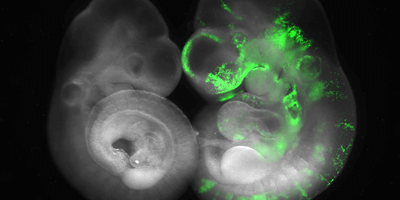Login
SubscribeNews & Opinion

Toward Better Biomarkers for Schizophrenia
Deanna MacNeil, PhD | Aug 7, 2023 | 3 min read
Researchers scratch the surface of schizophrenia susceptibility by uncovering DNA methylation differences in neonatal blood samples.
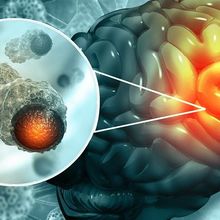
Capturing the Brain Tumor Microenvironment with Tissue Engineering
Deanna MacNeil, PhD | Aug 4, 2023 | 3 min read
Researchers built a 3D glioblastoma model to study therapeutic resistance and improve drug screening systems.

Islands of Knowledge: Hairy Skin Moles Make Their Mark
Iris Kulbatski, PhD | Aug 7, 2023 | 3 min read
Skin moles that sprout thick, long hairs produce signaling molecules that stimulate hair follicle stem cells to initiate new hair growth. This discovery may make baldness a thing of the past.
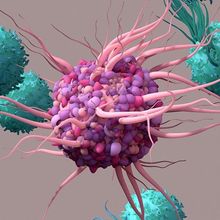
Circadian Signaling Affects T Cell Responses to Vaccination
Nathan Ni, PhD | Aug 9, 2023 | 3 min read
Annie Curtis’s research team revealed how circadian rhythm-regulated mitochondrial metabolism drives dendritic cell antigen presentation activity.
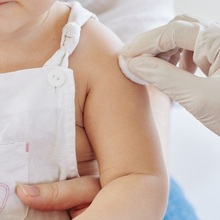
Vaginal Delivery Promotes Early Childhood Vaccine Response
Jennifer Zieba, PhD | Aug 8, 2023 | 3 min read
Researchers showed that the delivery method affects the microbiome and plays a role in the infant vaccine immune response.

Shaping Brain Recovery Using Bioelectricity
Iris Kulbatski, PhD | Aug 4, 2023 | 3 min read
Scientists are decoding how electrically stimulating transplanted stem cells helps heal the injured brain.

Inducing Cardiomyocyte Maturation
Jennifer Zieba, PhD | Aug 1, 2023 | 2 min read
By combining calcium and electrical pacing, researchers designed a scalable protocol for culturing mature cardiac tissues from induced pluripotent stem cells.

Simplifying the Search for Drug Targets
Aparna Nathan, PhD | Aug 1, 2023 | 3 min read
A new machine learning model promises fast prediction of drug-target interactions.

Iconic Geneticist Evelyn Witkin Dies at Age 102
Lisa Winter | Jul 24, 2023 | 3 min read
Lasker Award winner Evelyn Witkin discovered the mechanism for DNA repair following UV damage.
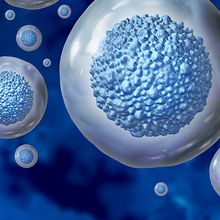
Death by Stem Cell: Developing New Cancer Therapies
Charlene Lancaster, PhD | Jul 24, 2023 | 3 min read
Khalid Shah engineers stem cells to deliver cancer therapeutics directly to tumors, thereby increasing their efficacy.

Noninherited Genetic Mutations Link to Schizophrenia
Alejandra Manjarrez, PhD | Jul 20, 2023 | 2 min read
By studying the genomes of more than 24,000 individuals, researchers discovered rare genetic mutations that may shed light on mechanisms underlying schizophrenia.
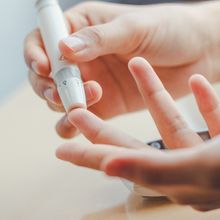
A Noninvasive Glucose Monitor for Managing Diabetes
Natalia Mesa, PhD | Jul 20, 2023 | 3 min read
A new, invisible fluorescent patch continuously monitors blood glucose levels in mice.

Aging Dogs Provide Insights for Human Longevity
Hannah Thomasy, PhD, Drug Discovery News | Jul 19, 2023 | 6 min read
Biogerontologist Matt Kaeberlein studies aging pets to determine how to improve healthspan in dogs and their humans.
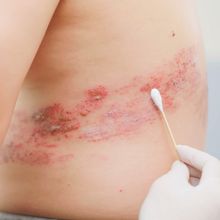
Delivering Gene Therapies in Utero
Natalia Mesa, PhD | Jul 18, 2023 | 3 min read
By delivering mRNA to the skin of mice in utero, researchers showed a proof-of-concept for shuttling gene therapies to skin cells before birth.
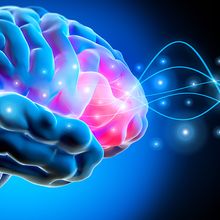
Turning up the Heat on Brain Tumors
Aparna Nathan, PhD | Jul 17, 2023 | 3 min read
Oncolytic viruses can help glioblastoma respond to immunotherapy.
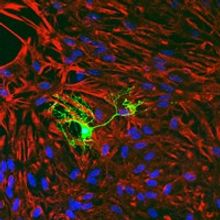
Searching for a Direct Route to Multiple Sclerosis Treatment
Deanna MacNeil, PhD | Jul 17, 2023 | 3 min read
Researchers created a new high-throughput tool to hunt for therapies that remyelinate the nervous system.

The Future of Gene Therapy for a Rare Pediatric Autoimmune Disease
Niki Spahich, PhD | Jul 10, 2023 | 3 min read
By editing a mutated immune regulatory gene in patient cells, Rosa Bacchetta brings hope to those suffering from IPEX syndrome.

On-Again, Off-Again Connections Advance Eye Regeneration
Iris Kulbatski, PhD | Jul 10, 2023 | 3 min read
Researchers track neural connections between retinal cells in a dish to understand their therapeutic potential.
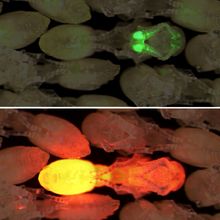
Spying on Transgenic Ants Reveals How Their Brains Respond to Alarm Odors
Alejandra Manjarrez, PhD | Jul 7, 2023 | 2 min read
By successfully creating transgenic ants for the first time, researchers discovered that danger-signaling pheromones activate a sensory hub in the ants’ brains.
